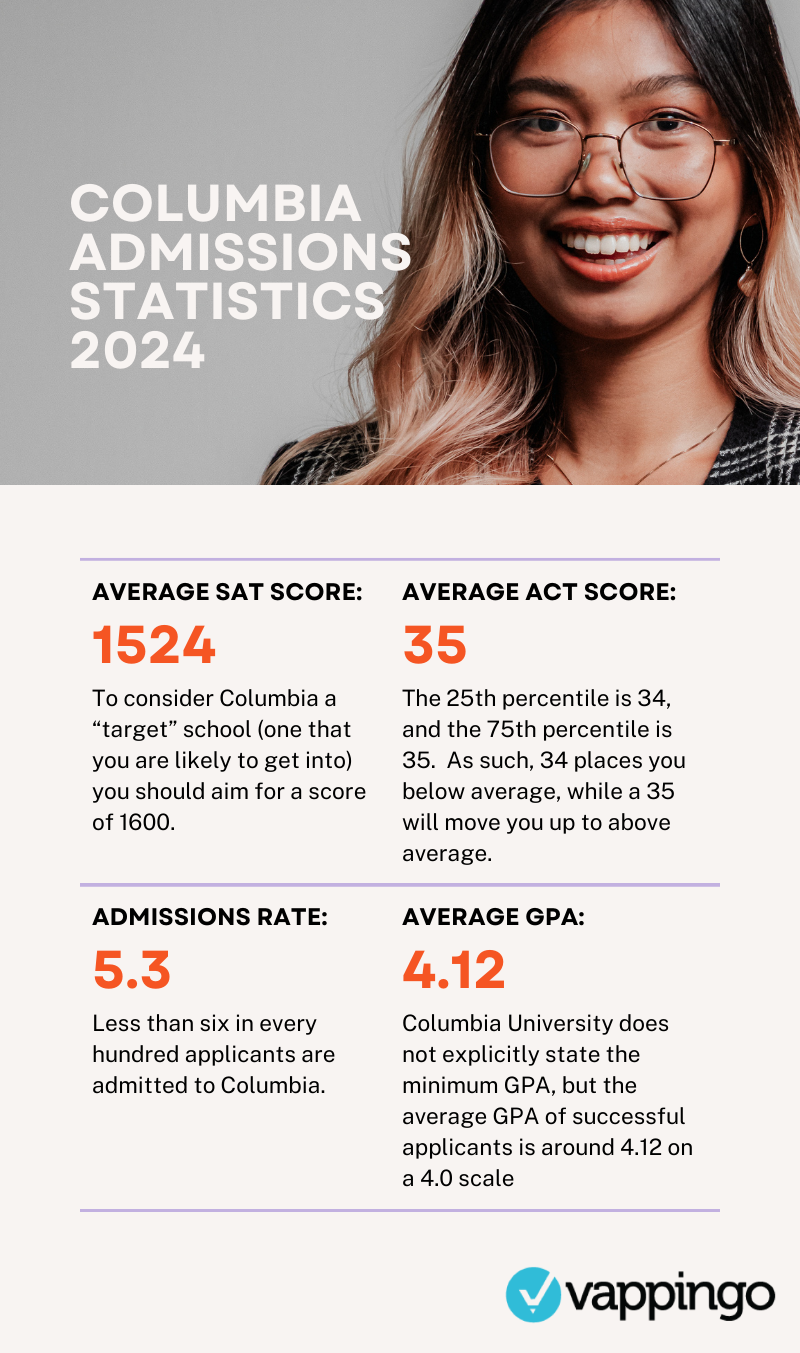Columbia University, located in the vibrant neighborhood of Harlem on Manhattan’s far northwest end, continues to thrive amidst New York City’s rich cultural and intellectual life. It remains the smallest Ivy League institution in terms of undergraduate enrollment but has seen a notable increase to 8,902 undergraduates, reflecting a dynamic and diverse student body preparing for advanced studies in various fields, including medicine, law, and journalism at Columbia’s renowned graduate schools.
The university’s admission process remains highly competitive, attracting students from across the globe. In 2022, it received a staggering 60,000 applications for just 2,000 places.
Columbia’s commitment to a rigorous core curriculum remains a hallmark of its undergraduate education. This curriculum is designed to foster a deep engagement with a broad range of subjects, including literature, science, art, music, philosophy, and foreign languages, ensuring students receive a comprehensive and well-rounded education. Classes are typically small, promoting intensive discussion and personal interaction, which are key to the Columbia educational experience.
The university offers an impressive array of majors, now numbering over 100, with popular choices reflecting a wide range of interests and disciplines. Columbia’s prime location in Manhattan also continues to provide unparalleled internship opportunities for its students, starting as early as their freshman year, thus blending academic learning with practical experience.
Columbia University Admissions Statistics at a Glance
The Facts About Columbia Admissions
Columbia University stands as a beacon of excellence in the academic world, distinguished not only by its prestigious status but also by the illustrious achievements of its alumni. Among its graduates are former presidents, Nobel Laureates, and celebrated authors, contributing to its reputation as a center for scholarly and professional achievement. The university is characterized by a highly competitive environment, where exceptionally talented students vie for academic recognition and the approval of their professors. Admissions are notably rigorous, with most students displaying SAT scores in the top percentile and a significant majority having graduated in the top 10% of their high school class. With thousands of applicants competing for a limited number of spots, the acceptance process is intensely competitive.
Columbia is particularly noted for valuing legacy applicants, giving special consideration to those whose parents are alumni. The Dean of Admissions takes a personal interest in each legacy application, highlighting the challenge faced by many highly qualified candidates in securing admission.
The university’s structure is comprehensive, encompassing a wide range of schools offering diverse majors and concentrations. Columbia is celebrated for its flexibility in academic programming, allowing students to tailor their studies through interdisciplinary approaches or personalized concentrations. Its political science program is internationally acclaimed, attracting leading figures in politics as both guest speakers and faculty members. Popular majors at Columbia include psychology, economics, political science and government, English language and literature, and biology, reflecting the university’s broad academic strengths.
Columbia’s location in the vibrant neighborhood of Morningside Heights in New York City offers its community unparalleled access to the cultural and intellectual riches of the city. The energy and opportunities of New York City are just steps away, providing an enriching backdrop to the rigorous academic life at Columbia.

Student Life at Columbia
A lot of parents and guidance counselors worry about the location and safety of the school, as it is located in Harlem, which isn’t exactly a place with the best of reputations. Most students say that the campus is pretty boring, and outside of classes, they usually have to hop the subway downtown for their social exploits. However, there are always parties (with lots of drinking, of course) scattered throughout the fifteen on-campus dorms. Housing is guaranteed for all four years, with many students living in single rooms. Any off-campus housing tends to be wildly expensive, so students generally take the university up on their offer.
Greek life doesn’t have much of a presence at Columbia, and thus has minimal influence on social life. Most students head off-campus for social activities, and take advantage of the amazing options New York City offers such as art museums, shows, movies, shops, restaurants, cafes and much, much more.
There isn’t much of a sports scene at Columbia either; without the physical education requirement, most students wouldn’t even know the school had a gym.
As for dating, soulful emo guys abound, and intellectual girls with a penchant for vintage fashions are plentiful. Sounds trendy, no?
What’s Good About Studying at Columbia
“It’s nice to come back to Columbia’s relatively quiet campus as a home after a long day of trudging around New York.”
“The classes are incredibly small, so there aren’t as many massive lectures to fall asleep in.”
“The required classes are actually quite engaging and are probably things I would have chosen on my own anyway.”
What’s Bad About Studying at Columbia
“The off-campus housing in NYC is exorbitantly pricey, so chances are, unless you score an insane real estate deal, you will be living in the dorms until you graduate.”
“The people here tend to be a bit cold. No one will just help you out without you asking for it, and even then, it’s rare.”
“For a school with a five billion dollar endowment, we certainly don’t see any evidence of it in financial aid.”
Columbia Admissions Requirements
Columbia University’s admission process is designed to identify prospective students who are likely to excel in its vibrant academic environment. Prospective first-year students can apply to either Columbia College or Columbia Engineering, showcasing their academic achievements, extracurricular involvement, and personal characteristics through various components of the application.
Applicants have the option to use the Common Application, the Coalition Application, or, for those who are QuestBridge Finalists, the QuestBridge Application. These platforms allow students to share autobiographical information, list achievements and activities, discuss summer experiences, and submit a personal essay. Columbia also requires applicants to answer specific questions that give the admissions committee a deeper understanding of the applicant’s academic interests, extracurricular pursuits, and overall fit for Columbia’s unique educational opportunities.
A vital part of the application is the secondary school report, which includes an official high school transcript, a recommendation from a high school counselor along with a school profile, and a midyear report. Columbia also mandates two teacher recommendations from academic discipline teachers, emphasizing the importance of a math or science teacher’s recommendation for engineering applicants.
An $85 application fee is required, but fee waivers are available for those who find the fee to be a financial burden.
Columbia adopts a test-optional policy for first-year applicants, allowing students to decide whether or not to include SAT or ACT scores as part of their application. This policy is designed to ensure that all students have an equal opportunity to present themselves to the admissions committee in a manner that accurately reflects their academic potential and achievements.
The admissions process also takes note of important dates and deadlines, such as the November 1st Early Decision and QuestBridge National College Match application deadline, and the January 1st Regular Decision application deadline. Financial aid applications have their own set of deadlines, integral for those seeking financial support.
Columbia University seeks students who demonstrate a strong academic foundation, a passion for learning, and a willingness to immerse themselves fully in the Columbia experience. The admissions process is crafted to select individuals who will contribute to and benefit from the unique academic and extracurricular opportunities Columbia offers, fostering a diverse and dynamic student body.
Columbia University Acceptance Rate
Columbia University’s acceptance rate for the Class of 2027 was 3.9%, with 2,246 students admitted out of a total of 57,129 applicants. This includes applications received through both Regular Decision and Early Decision processes. The university’s acceptance rate reflects its highly competitive nature, attracting a diverse and talented pool of applicants from all 50 states, several US territories, and 101 different countries.
Grade Point Average at Columbia University
Columbia University’s estimated average GPA for admitted students is around 4.15. This reflects the university’s highly competitive academic standards, requiring students to be at the top of their class and engaged in rigorous coursework
SAT and ACT Requirements
Columbia University has a test-optional policy for SAT and ACT scores for first-year applicants to Columbia College or Columbia Engineering. This means students can choose whether or not to submit SAT or ACT scores as part of their application. The average SAT score for admitted students is around 1524, and the average ACT score is about 35. This policy allows students to showcase their strengths beyond standardized tests, reflecting Columbia’s holistic review process.
Columbia University Admissions Essay Requirements
Columbia University requires applicants to respond to specific Columbia-specific essay questions in addition to the personal essay included in the Common Application or Coalition Application. These questions are designed to gain a deeper insight into an applicant’s intellectual curiosity, academic interests, and personal perspectives, helping the admissions committee understand the applicant’s potential fit within the Columbia community.
For the most up to date information about gaining admission to Columbia University, see Columbia University admissions.
Post Views: 1,859


